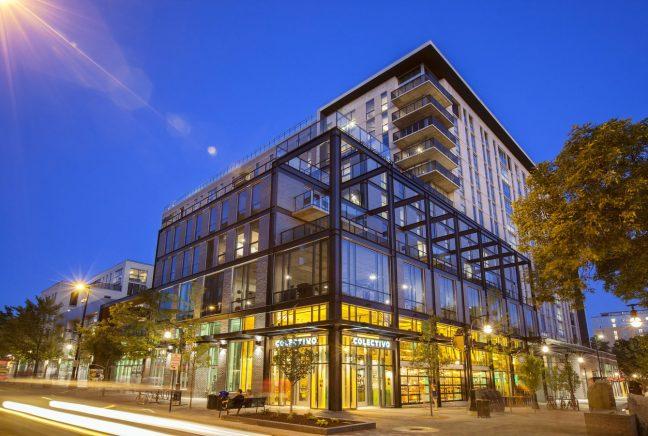If there is one thing the campus area does not need, it’s more expensive student housing options. The Hub project developers are back again and the latest rendition of their proposal fails to meet neighborhood and student needs, and represents a growing income divide on campus.
The Hub II project on Langdon began in 2019 by developers Core Spaces — the same firm behind The (first) Hub and The James, which have been on campus since 2015 and 2017, respectively. The Hub II will be built on 126 Langdon Street between current fraternity and sorority houses. The location also puts it adjacent to Madison’s famed Mansion Hill neighborhood.
Initially, residents of that area voiced major concerns over noise. The included pool space on the fifth floor of the proposed Hub II was a major point of pressure between Core and the surrounding community, which would only add to the already bustling Langdon neighborhood.
The original project’s architecture was also a sticking point with both the community and city government. The seven-story building plan breaks the City of Madison’s downtown plan dictating that buildings on Langdon must not exceed five stories.
This 2019/2020 proposal ended abruptly when the city failed to approve the design. Citing the seven-story plans, the pool area and the overall architectural look of the building, Madison’s Urban Design Commission rejected Core’s proposal for the 126 Langdon site, effectively killing the project altogether.
But, Core Spaces decided 2021 would mark their return to Madison with a new and improved proposal for their next luxury housing project. The new Hub II proposal removed the pool area but kept the seven-story design. This proposal was also rejected, this time by the Madison Plan Commission, citing Core did not do adequate work to remedy the concerns of the UDC and mentioning the building’s aesthetic did not fit the historic Langdon Street neighborhood.
Still, Hub II is not Core’s only project in Madison anymore. The developers are now planning a new project on State Street at its intersection with West Gorham. This project would require the destruction of nearly a full block to build a new 10-story tower — like their Hub II project — exceeding the building height limit of this neighborhood. This project is claimed to feature a whole 77 “affordable workforce” housing units. They have not yet disclosed the rental rate.
These two Core Spaces projects highlight the exorbitant rent problem Madison is currently facing, with the average studio apartment costing over $900. For students paying their way through college and working at Wisconsin’s minimum wage of $7.25 an hour, these students would need to work over 30 hours a week just to afford rent. This doesn’t take into account school costs, food or other necessities and definitely doesn’t factor in the full-time education these students are paying for.
This is where projects like the Hub or any other high-end apartment buildings fail to meet campus needs. The current rent for a studio apartment at The Hub is over $1400 per month, well above the average for the entire City of Madison. With new apartment complexes popping up closer and closer to campus, options for affordable housing are pushed further away, essentially creating a paywall to live near the university. Unless you are able to shell out the cost of living in these new high-rise buildings, you will find yourself walking further and further to get to your classes.
This is also not a new problem. Reporting from 2015 already cited Madison’s growing housing inequity as the first Hub project was opened. Since that date, we have seen the openings of other high-end projects like The James.
Developers clearly know our university brings in a number of high-income students. The median income of incoming student families is around $70 thousand and only around 14% of students qualify for the Pell grant or are grouped as ‘low-income.’ These development companies see the money and rush in to build their next shiny tower but overlook the students who can’t afford their high price tags. These students will continue to be forced out and away from campus every time a new high-end project is approved.
The City of Madison needs to start rejecting these proposals, not just because they don’t fit aesthetically, but instead because they further divide our campus and our city over income.
Ryan Badger (rbadger2@wisc.edu) is a sophomore majoring in political science.


